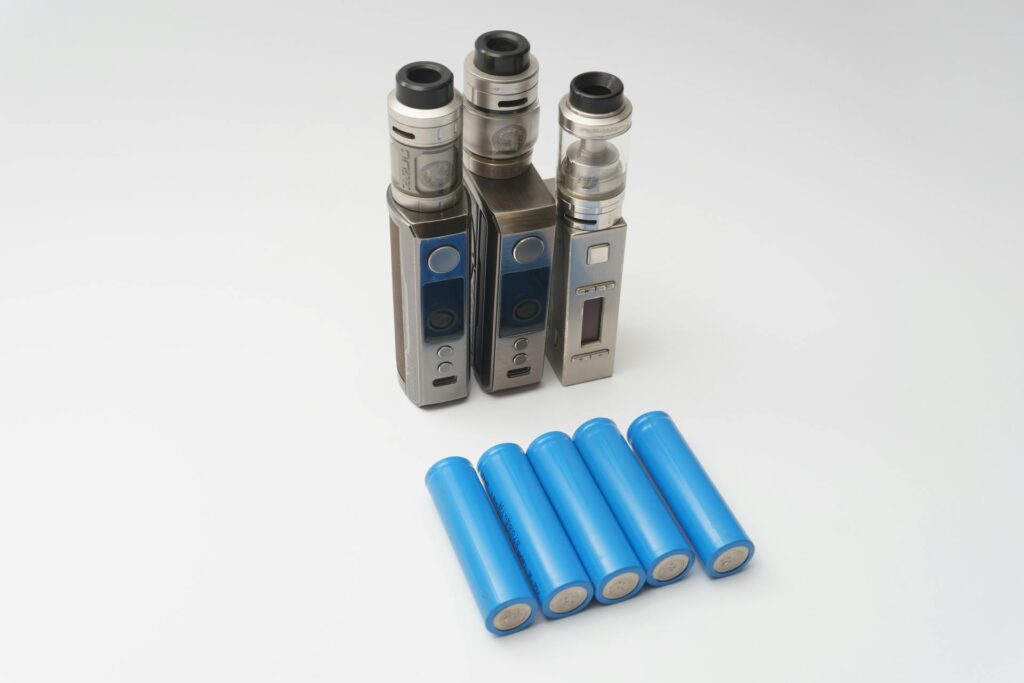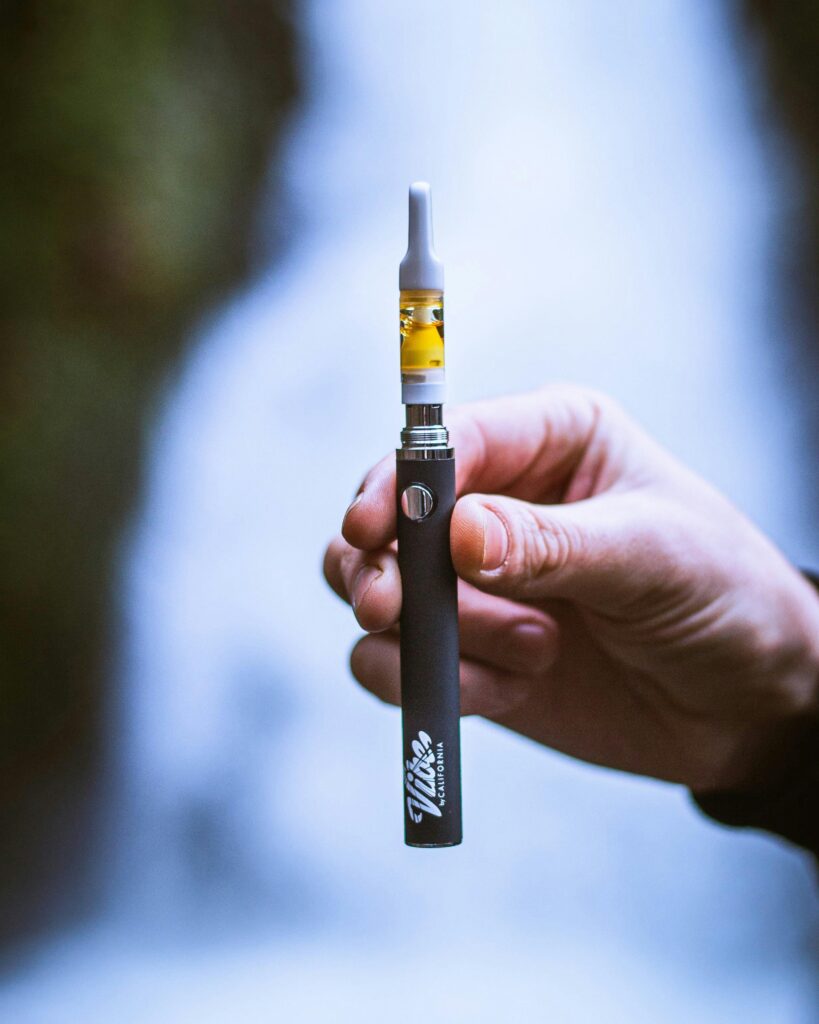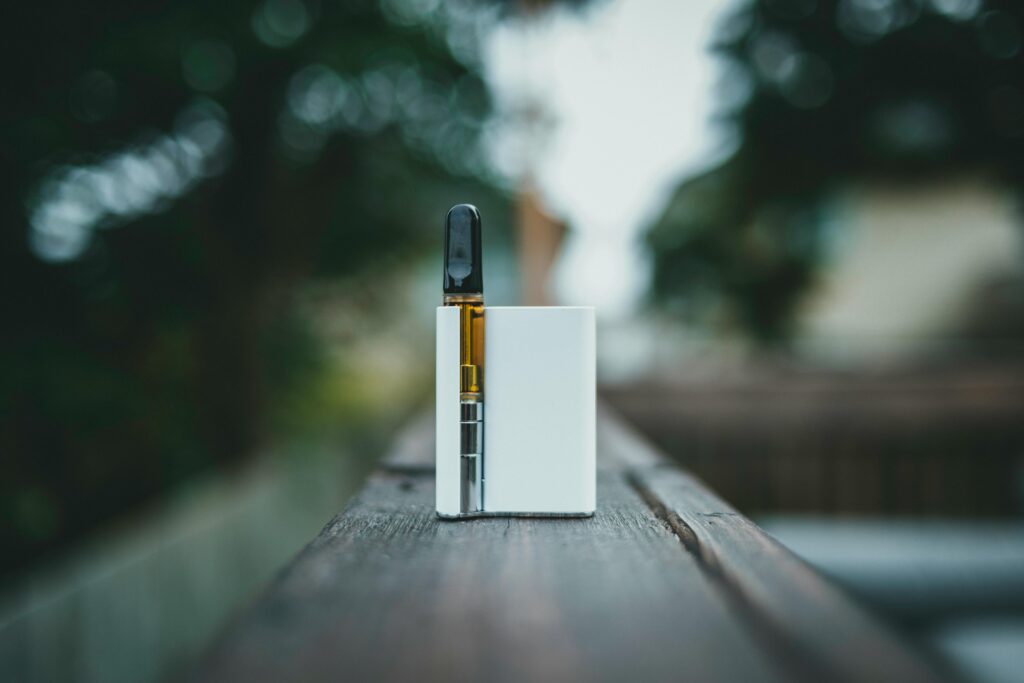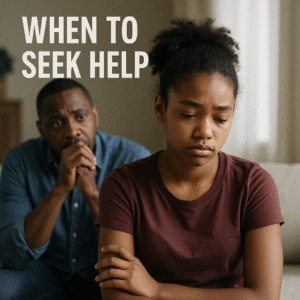So your teen might be vaping—or you’re worried they could start.
Let’s face it: keeping up with teen trends is practically a full-time job, and vaping has exploded onto the scene faster than most parents can say “e-cigarette.”
Vaping is the act of inhaling vapor produced by an electronic device that heats a liquid solution, typically containing nicotine, flavorings, and chemicals.
These devices come in all shapes and sizes—from ones that look like traditional cigarettes to sleek, modern gadgets that could pass for tech accessories.
Juuling? That’s vaping’s cooler cousin.
JUUL devices are a specific brand of e-cigarette that became wildly popular with teens thanks to their discreet, USB-like appearance (perfect for hiding from parents and teachers).
Why are your kids drawn to these devices?
They come in flavors like mango and mint, are perceived as “safer” than cigarettes, are incredibly shareable on social media, and look cool among peers.
Plus, there’s the rebellious drive that attracts teens to risky behaviors, especially if they are experiencing difficulties at home, school, social settings, and internally.
As a parent, understanding what these devices are and why they’re so appealing is your first step in handling this tricky issue.
The conversation doesn’t have to be awkward—in fact, it can be an opportunity to strengthen your relationship through honest communication.
Let’s look at how to do it.
1 – Educate Yourself First

Before getting into a conversation about vaping with your teen, arm yourself with accurate information. Here’s what you should know:
The Devices
Familiarize yourself with what vaping devices actually look like—from pod systems like JUUL to larger “box mods” and disposables like Puff Bars.
Pod systems are small, sleek, and often resemble USB drives, making them easy to hide.
Disposables like Puff Bars are pre-filled and thrown away after use, while box mods are larger, customizable devices that produce bigger vapor clouds.
Knowing what these devices look like can help you spot them if your teen is using or carrying one.
The Language
Terms like “hitting the JUUL,” “pods,” “nic salts,” and “cloud chasing” can help you understand what your teen is talking about.
“Hitting the JUUL” refers to using a JUUL device, while “pods” are the cartridges that contain the vaping liquid.
“Nic salts” are a type of nicotine that provides a smoother hit, making it easier for teens to inhale higher nicotine levels without coughing.
The Ingredients
Most vape liquids contain nicotine, propylene glycol, vegetable glycerin, and flavorings.
Nicotine is highly addictive and can harm brain development in teens, while propylene glycol and vegetable glycerin are used to create the vapor.
Flavorings, often marketed as fruity or sweet, make vaping more appealing to young users.
These ingredients may seem harmless, but they can have serious health consequences, especially for developing bodies.
The Health Risks
Nicotine addiction, lung damage, potential brain development effects for teens, and emerging research on long-term impacts are major concerns.
Nicotine can rewire a teen’s brain, making them more susceptible to addiction and mental health issues.
Lung damage from vaping can lead to conditions like “popcorn lung” or EVALI (e-cigarette or vaping product use-associated lung injury).
When your teen sees you’ve done your homework, they’re more likely to respect what you have to say instead of dismissing you as out of touch.
2 – Choose the Right Time and Place

Imagine having a serious conversation about vaping while your teen is tired or moody or you are running late and want to get it over with.
It will likely fail before you even get to your main points, with eye rolls and defensive responses almost guaranteed.
Timing is everything when it comes to sensitive conversations with your teen. The perfect moment to talk about vaping is:
- When you’re both relaxed and not rushed
- In a private setting where your teen won’t feel embarrassed
- During a natural opportunity, like when you see vaping in a TV show
- NOT during an argument or right after discovering they may be vaping
- NOT in front of siblings, friends, or other family members
Consider a casual setting, like a drive (where eye contact isn’t constant) or while doing an activity together where conversation flows naturally. These “side-by-side” chats often feel less intimidating to teens than formal, face-to-face talks.
Learn more: What Happens to a Teenager Playing Video Games Too Much
3 – Start with Curiosity, Not Accusations
I know it’s hard not to accuse your teen when you suspect they might be vaping—or even when you catch them with a device.
It’s natural to feel upset or worried, but your approach sets the tone for the entire conversation. Compare these two styles:
| Accusatory Approach | Curious Approach |
| “Are you vaping? I know you’re hiding something.” | “I’ve been learning about vaping and I’m curious about your thoughts on it.” |
| “You better not be Juuling. It’s dangerous and stupid.” | “What do you and your friends think about the whole JUUL trend?” |
| “Hand over your backpack. I want to check it right now.” | “I care about your health and wanted to open up a conversation about vaping.” |
| “If I ever catch you vaping, you’re grounded for a month.” | “I’d like to understand more about the pressures you might be facing around vaping.” |
This table format makes it easy for readers to compare the two approaches and see the difference in tone and effectiveness.
You can include this in your blog post to visually emphasize the importance of a curious, open-minded approach.
4 – Share Facts Without Scare Tactics

Parents often use fear to stop their teens from doing things like vaping. But scare tactics can make teens feel attacked or misunderstood.
Instead, try sharing facts in a way that feels real and important to their life.
For example, nicotine is very addictive. This means vaping could quickly become something they feel they need to do.
It’s not just about health—it’s about how needing to vape could mess with school, sports, or hanging out with friends. That’s something most teens would want to avoid.
Another fact is that one JUUL pod has as much nicotine as a pack of 20 cigarettes. This isn’t just bad for health—it’s also expensive.
Teens might not realize how much money they spend on pods or disposable vapes.
That’s money they could use for things they really care about, like clothes, games, or saving up for something big.
Vaping can also hurt their physical performance. Nicotine raises heart rate and blood pressure, making it harder to do well in sports or other activities.
Then there’s the risk of serious health problems, like “popcorn lung,” which is linked to chemicals in vape liquids.
This isn’t just something that might happen later—it could affect their energy and how they feel right now. It could make it harder to keep up with friends, school, or hobbies.
Lastly, nicotine affects brain development, which keeps happening until around age 25.
This isn’t just about the future—it’s about their ability to focus, learn, and handle emotions right now.
Trouble concentrating or mood swings could make school, relationships, and hobbies harder.
As you share this information, the goal is to give them the facts, not to scare or control them.
5 – Listen More Than You Talk
I know teens can say upsetting things, and it can be hard to hold yourself back and just listen.
But staying calm and really hearing them out can make all the difference. You’ll be able to know what is in their mind and the issue that needs to be addressed the most.
Talking more than listening may cause you to make unfair and false assumptions and cause them to shut down.
Here’s how a listening-focused conversation might unfold:
Teen: “It’s not a big deal. Everyone does it, and it’s way better than smoking.”
You: “I hear that you think it’s safer than cigarettes. What else makes you feel it’s not something to worry about?” (Listening without interrupting shows you care about their perspective.)
Teen: “Plus, Baraka’s older brother vapes all the time, and he’s fine. He says it just has water vapor and flavoring.”
You: “Oh, you’ve gotten some information from Baraka’s brother. What else have you heard about what’s in vape products?” (Validating their source without dismissing it outright keeps the conversation open.)
Teen: “I don’t know… But I’m not stupid. I wouldn’t get addicted like other people.”
You: “I definitely don’t think you’re stupid—just the opposite. It sounds like you’re confident in your ability to control your choices. I’m curious what makes you feel you wouldn’t be affected by the addictive properties?” (Showing respect while gently probing their assumptions helps them think deeper.)
Notice how each response acknowledges what your teen has said, then asks an open-ended question to keep them talking.
This builds trust and gives you insight into their thinking—without turning the conversation into a lecture or argument.
6 – Set Clear Expectations and Boundaries

Oh yes, you need to set those expectations and boundaries—and yes, there has to be serious consequences if they’re broken.
Teens might roll their eyes or push back, but deep down, they need to know where the line is. Here’s how to do it right:
- Be explicit about your expectations: Clearly state your family rules, like “Our family rule is no vaping, period.” No room for confusion.
- Explain the consequences: Let them know what will happen if they break the rules—and be prepared to follow through. Empty threats won’t work.
- Focus on health and legal concerns: Explain the risks to their health and remind them that vaping is illegal for minors. This isn’t about “because I said so”—it’s about keeping them safe.
- Consider a written agreement for older teens: Outline expectations and consequences together. This makes it feel like a shared commitment, not just a one-sided rule.
- Make it about health and wellbeing, not control: Frame the boundaries as being about their safety and future, not about power or authority.
Although it may not appear as so, teens actually do want boundaries—they provide security even when they push against them.
Your rules show you care enough to protect them, even when it’s uncomfortable.
Keep the Conversation Ongoing: We Can Help
One talk won’t be enough.
Create an atmosphere where vaping and other difficult topics can be revisited regularly through casual check-ins, sharing relevant news, and acknowledging how peer pressures evolve.
Remember to celebrate when your teen makes healthy choices—positive reinforcement goes much further than criticism.
Parenting through these challenges doesn’t have to be a solo journey.
At ParenTeen Kenya, we specialize in supporting families having these exact conversations.
Our trained counselors offer mediation sessions, peer pressure resistance strategies, and therapy sessions for teens struggling with nicotine dependence.
Jane Kariuki is a devout Christian, Clinician, Psychologist, and founder of ParenTeen Kenya. She authored an exceptional training manual used in her teens’ workshop and an instructional guidebook for her parenting classes. If she is not training, blogging, or counseling, Jane loves to spend time with her sweet husband and three children.








[…] The result? Missed deadlines, forgotten tasks, and constant battles over what looks like “common sense.”By understanding executive functioning issues, you can stop viewing these behaviors as willful disobedience and start providing tools to support them: visual schedules, reminders, checklists, and step-by-step guidance.These aren’t just shortcuts—they’re tools to help your teen build skills their brain isn’t yet wired to handle on its own.Interesting Read: How to Talk to Teens About Vaping and Juuling […]
Interesting conversations
Feels weird a parent saying cloud chasing In a conversation with his/ her teen
Great ideas
Yes it might. In some instances, the teen might relate more with it.